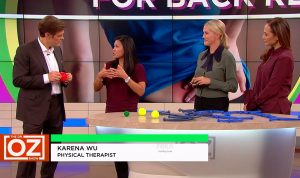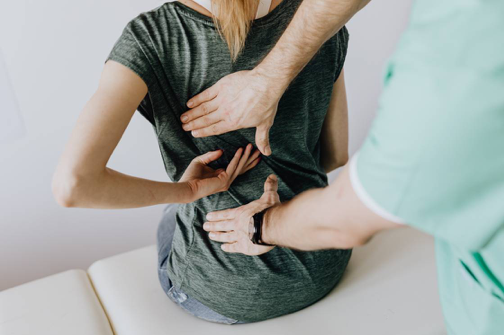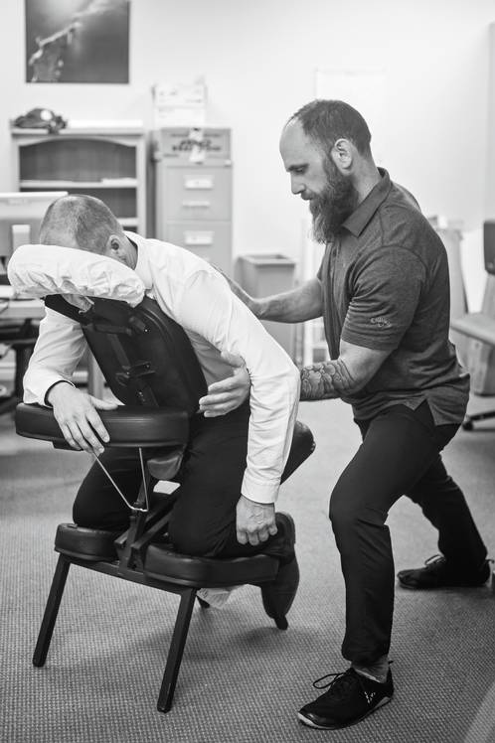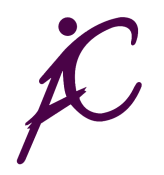 ActiveCare Physical Therapy, PC
ActiveCare Physical Therapy, PC
29 West 38th Street
Suite 601
New York, NY 10018

Physical Therapy For The Back
Do you need physical therapy for the back? If you are suffering from pain in your lower back for more than a couple of weeks, your doctor will recommend going to a physical therapist. Following simple measures like applying something cold or hot, or using pain remedies and OTC drugs may help. However, one of the best methods of improving physical pain is exercising and other similar treatments. These treatments occur under the supervision and guidance of a professional physical therapist.
A physical therapist will try to identify the reason for your back pain. They will also determine what type of pain you are having and if it is chronic or acute pain. They will perform various tests and guide you with proper treatment, depending specifically on your condition.

(Source)
Causes of Back Pain
Our body consists of a complicated structure of bones, discs, tendons, and ligaments. All these work together in supporting the body along and helping us move. The segments of your spine are cushioned with disks that are cartilage-like pads. If you are having trouble with any of these body parts, you may suffer from back pain. However, in some cases, the cause for back pain is unclear.
Strain
Back pain commonly occurs due to strain, injury, or tension. The most common causes of back pain are:
- A muscle spasm
- Strained ligaments or muscles
- Muscle tension
- Falls, fractures, or injuries
- Damaged disks
Activities that are usually responsible for spasms or strains include:
- Lifting something too heavy
- Lifting something improperly
- Making an awkward and abrupt movement
Structural Problems
There are a lot of structural problems that can lead to back pain. Here are some examples:
1. Ruptured Disks
Disks cushion each vertebra in your spine. If your disk ruptures, the pressure will fall on your nerves, resulting in back pain.
2. Bulging Disks
In a similar way as a ruptured disk, bulging disks also cause pain by adding pressure to the nerve.
3. Sciatica
A herniated or bulging disc can sometimes press against your nerve. This building disk can cause a shooting and sharp pain can travel through your buttocks to the back of your leg.
4. Arthritis
Osteoarthritis can lead to issues with the joints in your lower back, hips, or other places. In fewer cases, spinal stenosis can occur, where the space surrounding the spinal cord becomes narrow.
5. Abnormal Spinal Curvature
Your spine may begin to curve in an unusual manner, resulting in back pain. An example of an abnormal curve is scoliosis, in which your spine curves to one side.
6. Osteoporosis
Bones and vertebrae of your spine become porous and brittle, resulting in fractures.
7. Kidney Problems
Kidney infection or kidney stones may cause back pain.

(Source)
Movements and Posture
You may suffer from back pain due to poor posture or everyday activities. For example:
- Twisting
- Sneezing or coughing
- Over-stretching
- Pulling, pushing, lifting, or carrying something
- Sitting or standing for a long time
- Straining your neck while using a computer or driving
- Long drive sessions without any breaks, even when you are hunching
- Sleeping on a mattress that keeps your spine straight and does not support your body
- Bending in an unusual way or for a long period
You can improve your posture through the following common activities:
1. Repeated Motion
If you are suffering from pressure or irritating of the nerve such as spinal stenosis or disk bulging, you can seek help from repeated movement program. During these conditions, pain flows down the legs, and you may feel weakness, numbness, and tingling. Your leg pain may be worse than your back pain.
2. Stabilization
The second treatment program that is most effective is stabilization exercises. This happens when the muscles of your abdomen stabilize the spine and become weak or can’t work properly.
If you are having back pain, you may find it difficult to engage the correct muscles because the surrounding muscles tighten up and lead to stiffness. With these exercises, stiff muscles will relax. A physical therapist will help stabilize your spine and correct your spinal and abdominal muscles.
3. Manipulation/Mobilization
When your spine feels stiff, your physical therapist will suggest mobilization and manipulation. In manipulation, a physical therapist will use rapid and short movement over your joint while keeping your body in a specific position. With mobilization, your physical therapist will keep similar positions, but the movement will be gentle and slow.
Consult Activecare Physical Therapy About Your Back
If you are suffering from back pain that does not improve after resting, weakness, and fever leading to unexplained weight loss and numbness in your legs or any other severe condition related to bones, ligaments, and muscles, you should consult a physical therapist.
To schedule an appointment with a physical therapist, call us at (212) 777-4374. Or visit our website for further information.
